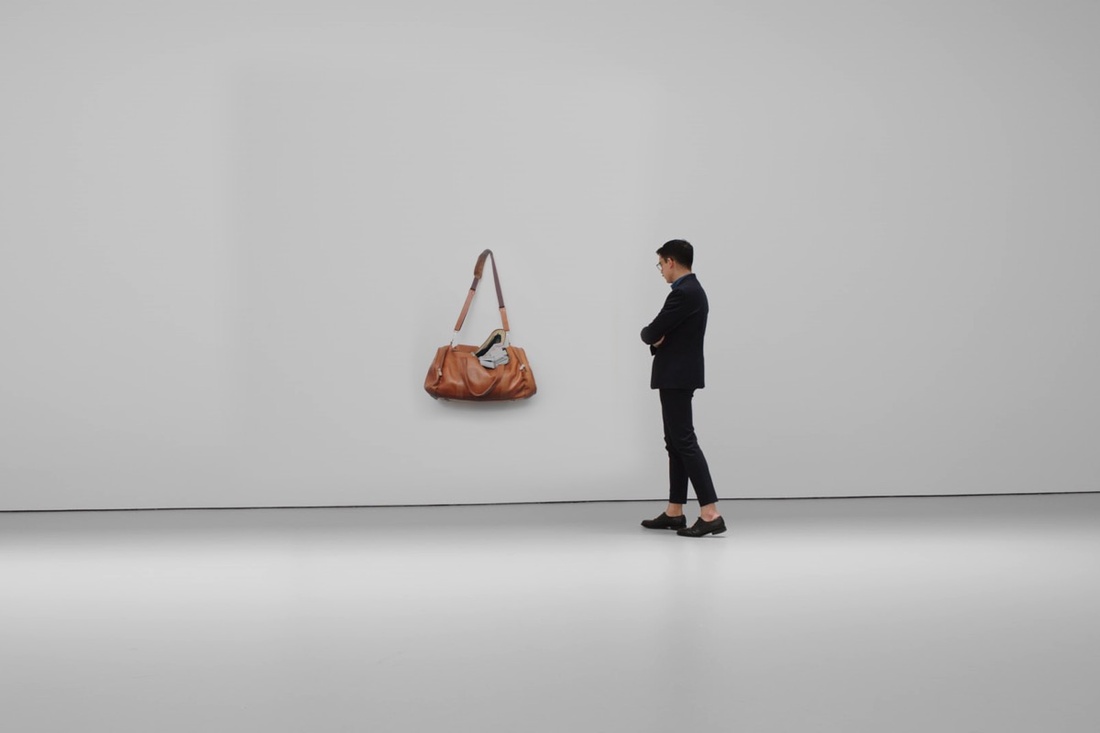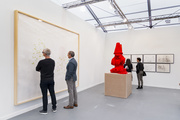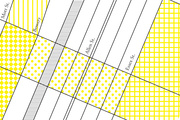The New Collector’s Guide to Understanding Art Pricing
 Image still from Artsy’s “The Art Market, Explained” © Artsy 2016.
Image still from Artsy’s “The Art Market, Explained” © Artsy 2016.
Let’s say you’re ready to buy your first piece of art. You’ve visited a few art fairs, you’ve spent the last half-dozen Saturdays wandering the streets of Chelsea and the Lower East Side, and you’ve written down the names of artists and works you adore. You’re ready to co-habitate with one of these works. There’s just one thing you don’t understand: Where do the prices come from?
There are lots of factors that may go into the price of an artwork, including straightforward and visible things like size or labor intensity and less immediately apparent things like an artist’s reputation and demand from collectors. One factor that’s harder to discern is “value,” according to Todd Levin, a New York-based art advisor and founder of Levin Art Group. He distinguishes between price and value, emphasizing that the latter informs the former, but not the other way around.
Price, Levin said, is a quantity; it’s a number that, in a few (or sometimes many) digits, encapsulates any number of qualitative judgments at a given moment, as determined by a gallerist or the highest bidder at an auction. Value, on the other hand, takes a longer view as to a work’s aesthetic or conceptual worth, and determining it requires some investment in learning about art and art history. Levin encourages his clients to first pursue education before pursuing objects because, he said, they “tend to have more hits than misses” when they do buy.
To gain confidence in your ability to determine whether, for you, a work’s price and value are aligned, Levin suggests developing relationships with ten to fifteen young galleries—and make a point of visiting each of them once a month. “Much new art looks exciting in the context of the gallery opening or art fair,” he said. “It is quite common to feel underwhelmed by artworks one may have had initial enthusiasm about. Spending time with great art helps exercise and sharpen the eye to look at the new.”
Even before embedding yourself in the art community, you can learn some basic guidelines that typically inform an artwork’s price. While there are no hard-and-fast rules, said Rebekah Bowling, specialist and head of the New Now 20th century and contemporary art auction at Phillips, unique objects (such as a painting or sculpture created by hand) tend to cost more than editioned works, such as, say, a series of ten prints, of which you might buy just one. Similarly, the work’s medium will often influence price. For the same artist, a work on paper will typically cost less than a painting of the same scale. Size is also a factor: bigger works tend to command bigger prices.
An artist’s life cycle is another key factor. Artists at the very beginning of their careers will typically have lower price points than mid-career artists, who typically have been showing their work for around a decade and have garnered some media attention and shown at a regional or national level. More established artists tend to cost more; they’ve typically been shown internationally and may be part of institutional collections. Similarly, younger galleries in frontier neighborhoods should have more entry-level works than ones with ground-floor spaces in more established neighborhoods like New York’s Chelsea or London’s Mayfair.
Nicholas Campbell, founder and managing director of London-based Narcissus Arts, a consultancy specializing in works priced under £10,000, advises his clients to consider originality when they’re evaluating a work’s price. “Every now and then there is something that jumps out,” he said, and that’s the quality that will likely contribute to an artist’s longevity and value in the broader cultural landscape, which in turn tends to increase price.
When artists do something truly original, they tend to get noticed by critics, curators, and fellow artists. That could range from bringing a fresh perspective to representation (Kerry James Marshall’s large-scale portraits of black life, highlighted in last year’s retrospective at The Met Breuer, come to mind) to innovating with a new medium or technique (such as artists working with virtual reality or mixed reality.) Art advisers like Campbell and Levin use a background in art history to try to spot those artists before they’re widely known.
Campbell also looks at tangible data points within an artist’s CV to better understand where they have been and where they might be going. He’ll look at schools the artist has attended, any prizes she or he has won or been nominated for, whether the artist has had a solo show or been featured in group shows at prominent institutions, which curators follow his or her work, and whether the work has traveled nationally or internationally. “You can find 23-year-olds who have their BA, their MA, have been in three group shows or a national show, and have already gotten awards,” said Campbell. “That shows there’s a real trajectory.”
Of course, not every artist comes with an obvious pedigree. In that case, Campbell advises looking more closely at the work—the process, the artist’s intention, what ideas and techniques animate it. He mentioned an artist who’d recently had a London show who “quite literally knocks these [works] together in 40 minutes, and is now charging four grand,” but who couldn’t actually explain the work to him when Campbell visited his studio. Those works, Campbell felt safe in saying, do not justify their price tag. By contrast, he said, clients can intuit the value of work that’s deeply labor-intensive, intricate, and thoughtful. Another facet of his work is trying to introduce his clients to artists, “to give them a sense of what’s going through the artist’s head.”
That’s something Levin advises too, if at all possible, since artists are perhaps best positioned to explain their pricing and what makes one work more dear to them than another. Once you know an artist, he said, it’s perfectly reasonable to ask a question about, say, why two works of the same size are priced seven thousand dollars apart. “Put that question out in a way that you’re obviously not attacking them, but you’re genuinely curious about why” the price discrepancy exists, Levin advised. “People aren’t afraid to have those kinds of monetary conversations because they feel it’s genuinely couched in curiosity.”
Timing matters too. Bowling recommends checking an artist’s CV for consistent output and recognition. “Have they been working every year?” she asked. “Or has this person not done anything since 2012?” Levin suggests waiting and watching an artist mature for a few years before buying something, to see if the work continues to evolve. “It’s better to spend the $25,000 when you are a little more comfortable with the market variables than taking the chance at $10,000,” he said.
Another factor to consider is where the art gets sold. Galleries price works according to the size of the work, the success of the most recent show, and any other relevant career-related variables, such as a recent institutional show or a nomination for an award, said Bowling, who spent seven years at Andrea Rosen Gallery before joining Phillips. In addition, galleries try to keep the prices for their artists on a steady upward trajectory, rather than riding the highs and lows of the broader art market as auction prices more often do. By contrast, auction estimates usually account for buyers’ tastes and appetites, as well as where the art market is in its cycle. “I have to think about many people it will appeal to, how many bidders, how that competition is going to drive up the price, and base my estimate range on that,” she said.
While Bowling describes herself as “the biggest proponent of the gallery system,” she said the straightforward nature of auction pricing can be a great entry point for new collectors. “I think there’s something appealing about the auction environment,” she said. “Here’s the estimate range, we have an auction, and people bid against each other. That’s how the price is achieved.”
Bowling, Campbell, and Levin all stressed one thing: Collectors shouldn’t treat art like a financial investment. (That’s even, and perhaps especially, the case for those who work in financial services, who often cite headlines of multi-million-dollar prices achieved at auction.) Since most art works do not increase in value, Bowling suggests finding a risk threshold, and buying within those limits. For one collector, that might be $3,000, or, for another, $3 million. “Find that threshold you’re comfortable with losing or gambling on,” she advised, “and if you go beyond that level, do more research.”
Levin goes further. He recommends assuming the price for a work by a new artist will go to zero after, say, five years, much as a dining set would lose most of its value over a similar time frame. If that work cost $5,000, or $1,000 a year, it works out to a cost of roughly $3 a day. “Is the piece going to give you $3 of pleasure a day?” he asks. If it does, “then it’s worth what you paid for it.” And that, he said, is the point of buying art.
“If you want to buy stocks,” Levin said, “you can just hang bags of money on the wall.”
—Anna Louie Sussman





No comments:
Post a Comment